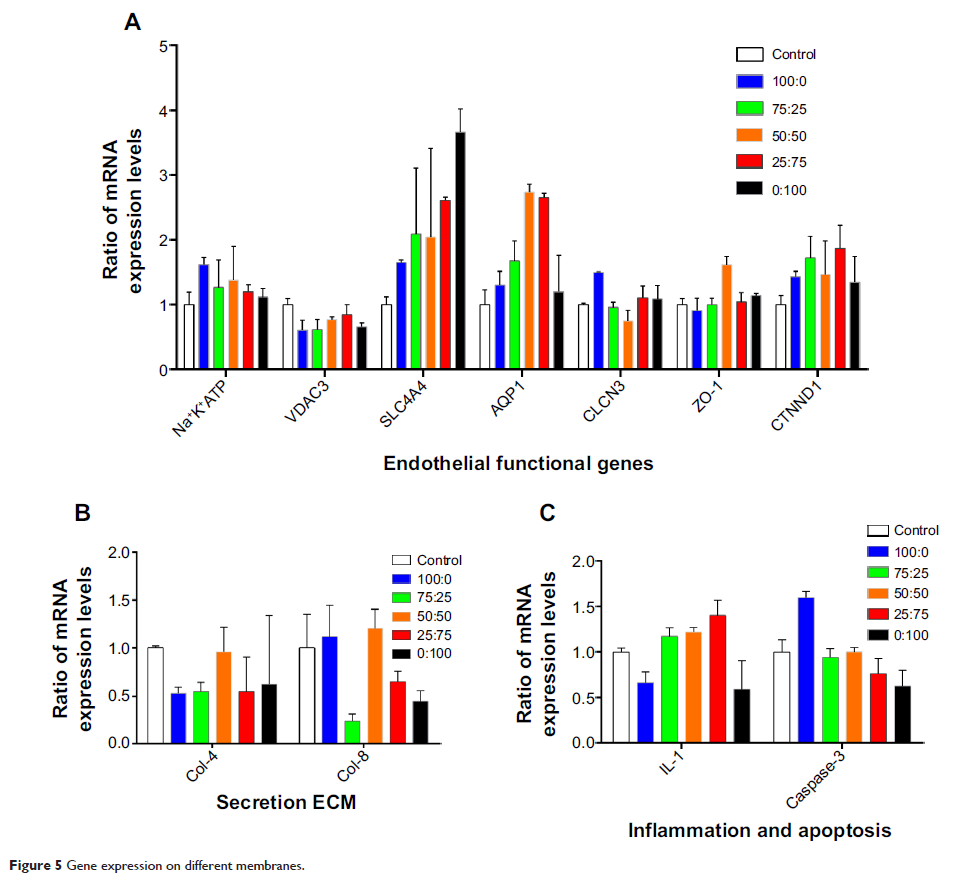9 7 6 4 1
论文已发表
注册即可获取德孚的最新动态
IF 收录期刊
- 3.3 Breast Cancer (Dove Med Press)
- 3.4 Clin Epidemiol
- 2.5 Cancer Manag Res
- 2.9 Infect Drug Resist
- 3.5 Clin Interv Aging
- 4.7 Drug Des Dev Ther
- 2.7 Int J Chronic Obstr
- 6.6 Int J Nanomed
- 2.5 Int J Women's Health
- 2.5 Neuropsych Dis Treat
- 2.7 OncoTargets Ther
- 2.0 Patient Prefer Adher
- 2.3 Ther Clin Risk Manag
- 2.5 J Pain Res
- 2.8 Diabet Metab Synd Ob
- 2.8 Psychol Res Behav Ma
- 3.0 Nat Sci Sleep
- 1.8 Pharmgenomics Pers Med
- 2.7 Risk Manag Healthc Policy
- 4.2 J Inflamm Res
- 2.1 Int J Gen Med
- 4.2 J Hepatocell Carcinoma
- 3.7 J Asthma Allergy
- 1.9 Clin Cosmet Investig Dermatol
- 2.7 J Multidiscip Healthc

电纺纳米纤维 SF/P (LLA-CL) 膜:一种内皮角膜移植术的潜在底层
Authors Chen JZ, Yan CX, Zhu MY, Yao QK, Shao CY, Lu WJ, Wang J, Mo XM, Gu P, Fu Y, Fan XQ
Published Date May 2015 Volume 2015:10 Pages 3337—3350
DOI http://dx.doi.org/10.2147/IJN.S77706
Received 18 November 2014, Accepted 21 February 2015, Published 5 May 2015
Background: Cornea transplant technology has progressed
markedly in recent decades, allowing surgeons to replace diseased corneal
endothelium by a thin lamellar structure. A thin, transparent, biocompatible,
tissue-engineered substratum with corneal endothelial cells for endothelial
keratoplasty is currently of interest. Electrospinning a nanofibrous structure
can simulate the extracellular matrix and have beneficial effects for cell
culture. Silk fibroin (SF) has good biocompatibility but poor mechanical
properties, while poly(L-lactic acid-co-Ɛ-caprolactone) (P(LLA-CL)) has good mechanical properties
but poor biocompatibility. Blending SF with P(LLA-CL) can maintain the
advantages of both these materials and overcome their disadvantages. Blended
electrospun nanofibrous membranes may be suitable for regeneration of the
corneal endothelium. The aim of this study was to produce a tissue-engineered
construct suitable for endothelial keratoplasty.
Methods: Five scaffolds
containing different SF:P(LLA-CL) blended ratios (100:0, 75:25, 50:50, 25:75,
0:100) were manufactured. A human corneal endothelial (B4G12) cell line was
cultured on the membranes. Light transmission, speed of cell adherence, cell
viability (live-dead test), cell proliferation (Ki-67, BrdU staining), and cell
monolayer formation were detected on membranes with the different blended
ratios, and expression of some functional genes was also detected by real-time
polymerase chain reaction.
Results: Different blended
ratios of scaffolds had different light transmittance properties. The 25:75
blended ratio membrane had the best transmittance among these scaffolds. All
electrospun nanofibrous membranes showed improved speed of cell adherence when
compared with the control group, especially when the P(LLA-CL) ratio increased.
The 25:75 blended ratio membranes also had the highest cell proliferation.
B4G12 cells could form a monolayer on all scaffolds, and most functional genes
were also stably expressed on all scaffolds. Only two genes showed changes in
expression.
Conclusion: All blended ratios
of SF:P(LLA-CL) scaffolds were evaluated and showed good biocompatibility for
cell adherence and monolayer formation. Among them, the 25:75 blended ratio SF:P(LLA-CL)
scaffold had the best transmittance and the highest cell proliferation. These
attributes further the potential application of the SF:P(LLA-CL) scaffold for
corneal endothelial transplantation.
Keywords: silk fibroin,
poly(L-lactic acid-co-Ɛ-caprolactone),
B4G12, corneal endothelium, regeneration
